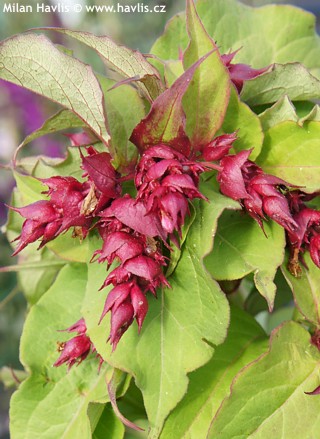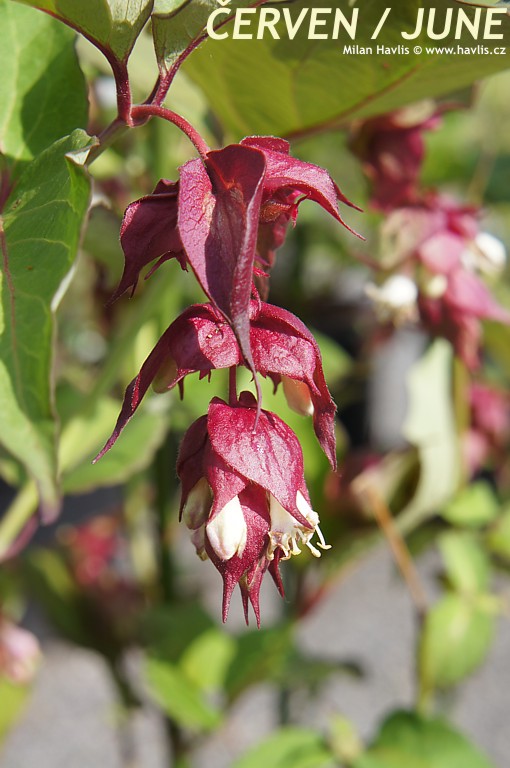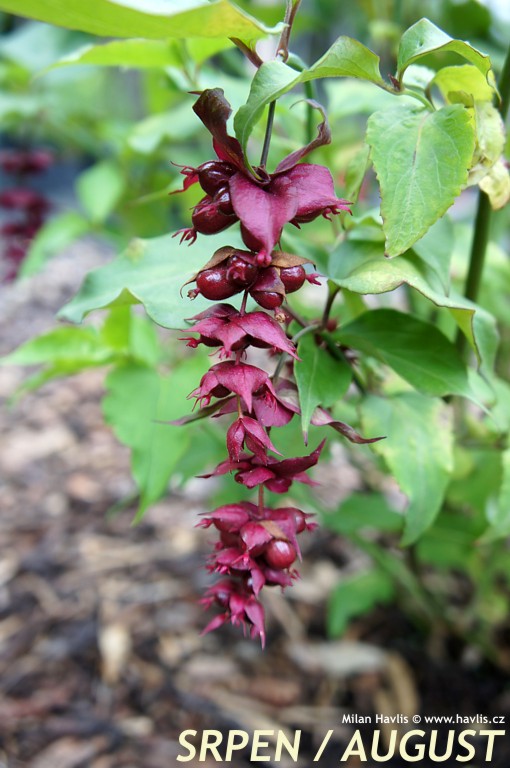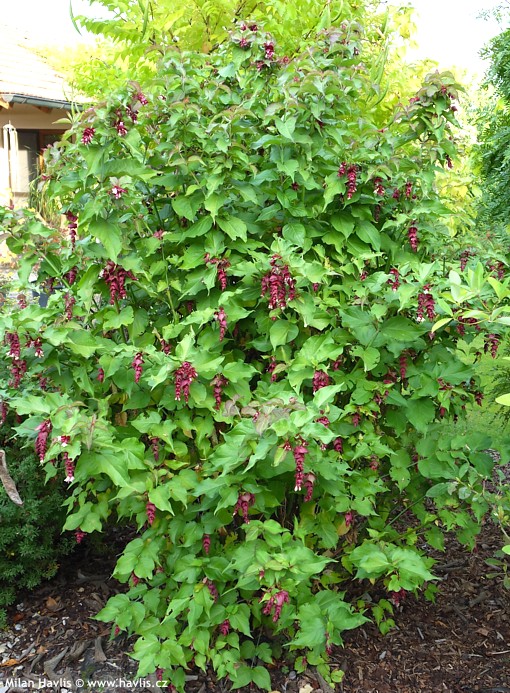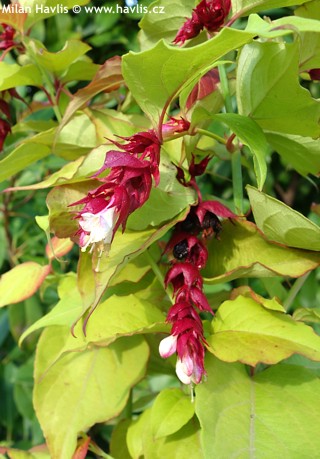Leycesteria formosa 'PURPLE RAIN' Himalayan honeysuckle
Himalayan honeysuckle is a native Asian plant that comes from mountain woodlands of west China and Himalayas. In European gardens it is grown for its ornamental inflorescence composed of claret-red bracts hanging above small, campanulate, almost white blooms. Purple Rain is a variety with richer purple-red colour of these bracts. It forms pendent spikes or racemes that are produced continuously from June until September and the later they are borne the longer they get. Flowers are followed by ornamental, spherical berries that are almost black and glossy, non edible, though some say they taste sweet.
Himalayan honeysuckle keeps on making new flowers as the plant continues growing throughout the season. It is a fast growing plant that is usually killed to the ground in zone 6 winters and comes back from the roots, making about 1.5m long, blue-green stems by August. Deciduous leaves are ovate, tapered, and have a thin, purple-red margin. In autumn the whole plant turns burgundy red.
Himalayan honeysuckle likes a sunny spot with well-drained but evenly moist, fertile soil. It will grow in partial shade, too, but will have fewer flowers of not as beautiful colour. It needs good mulching in zone 6 and should be cut back to 10-15 cm above ground after all frosts. In zones 7 and 8 you can leave a framework of mature wood of maximum 1m. It is root hardy to about -23°C (zone 6) and wood hardy to about -17°C (zone 7).
Last update 16-12-2012

































